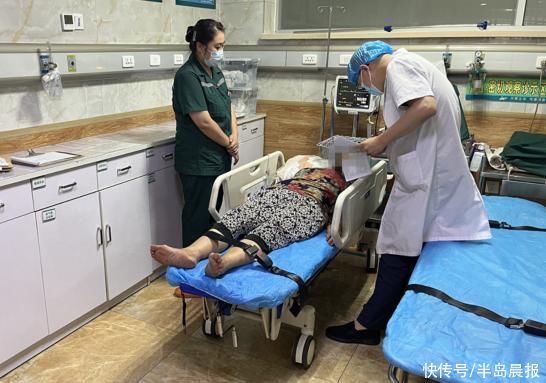For the past few days, the continuous torrential rain in Wafangdian has provided a good environment for the growth of wild mushrooms. There are many kinds of mushrooms with similar shapes. Poisonous mushrooms and non-toxic mushrooms lack effective identification methods, and it is difficult to distinguish them based on personal experience.
Since the beginning of July, mushroom poisoning incidents have occurred frequently. As of the press release on July 20, Wafangdian Third Hospital has successively treated more than ten cases of mushroom poisoning. The patients were all admitted to the hospital with symptoms such as nausea, vomiting, diarrhea, and abdominal pain after eating mushrooms, and the liver and kidney function tests were severely damaged.
At 12:30 on July 13, Mr. Bi, 62, was admitted to the hospital. After being admitted to the hospital, I learned that Mr. Bi took less wild mushrooms, and it was three days before the onset of the disease. The condition did not deteriorate further, and he was given conventional treatment methods. It is still under further observation and monitoring.

At 8:20 on July 14, 69-year-old Mr. Yan was admitted to the hospital. When the patient was sent to the emergency department of Wafangdian Third Hospital, he had developed muscle spasmodic pain, chest tightness, palpitations, shortness of breath, and soy sauce-colored urine. Considering the rapid progress of the poisoning disease, he was immediately admitted to the Department of Critical Care Medicine. After repeated communication with family members, the director of the department, Wang Wenwen, and the general medical staff continuously guarded the patient, and performed symptomatic treatment such as plasma exchange, hemoperfusion, and hemofiltration for the patient.
Wang Wenwen, director of the Department of Critical Care Medicine, Wafangdian Third Hospital, reminded: Poisoning incidents occur from time to time, and the department will treat some patients with poisonous mushroom poisoning every year, mainly from July to September.
There are 7 clinical types of common mushroom poisoning, namely acute liver damage type, acute renal failure type, rhabdomyolysis type, gastroenteritis type, neuropsychiatric type, hemolytic type In addition to photosensitive dermatitis, it can also cause damage to other systemic organs.
Director Liu Wentong of the emergency department reminded:
At present, there is no effective treatment for poisonous mushroom poisoning in medicine, and it should be ruled out as soon as possible. Toxins are the best choice for a valuable opportunity for treatment. Therefore, once you eat poisonous mushrooms and cause poisoning, you must go to a regular hospital for treatment as soon as possible. The sooner you treat it, the better your chances of recovery, otherwise serious consequences are likely.
Not picking or eating wild mushrooms is an important way to avoid mushroom poisoning. Mushrooms should be purchased through regular channels and at regular vegetable stores. You should always be alert to mushroom poisoning. Once symptoms appear, you should go to a regular hospital immediately. When visiting a doctor, try to bring the remaining mushrooms with you, or describe the characteristics of the mushrooms you eat in detail, so that the doctor can make a quick diagnosis and timely symptomatic treatment.
Jin Mengmeng, Cai Lijie, Peninsula Morning News, 39 Degree Video Chief Reporter Zhang Ximing, intern Li Jiayue